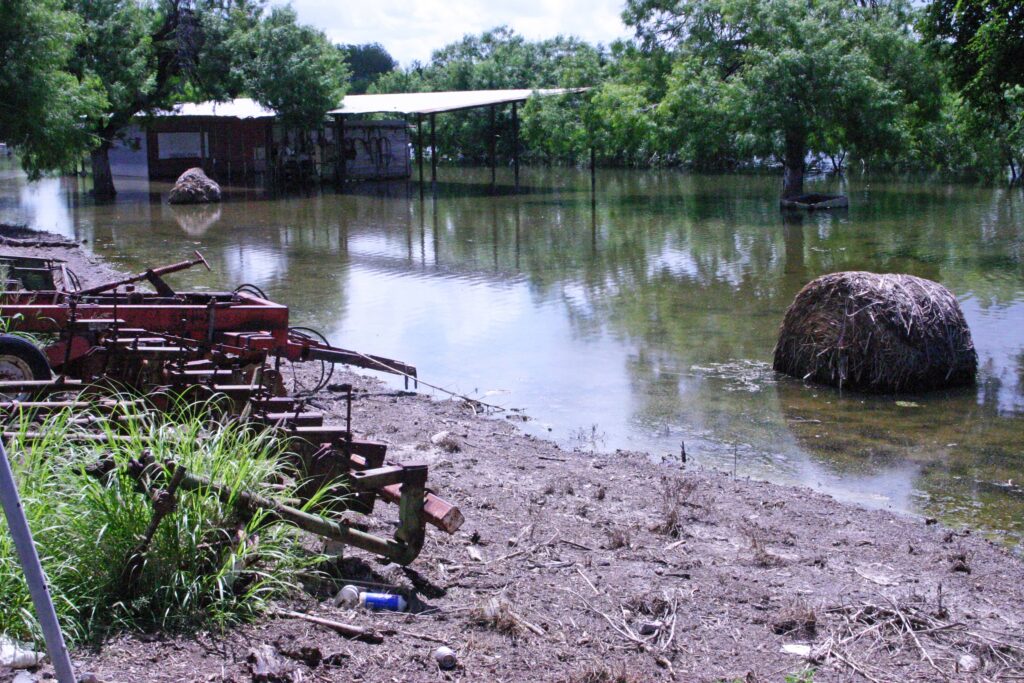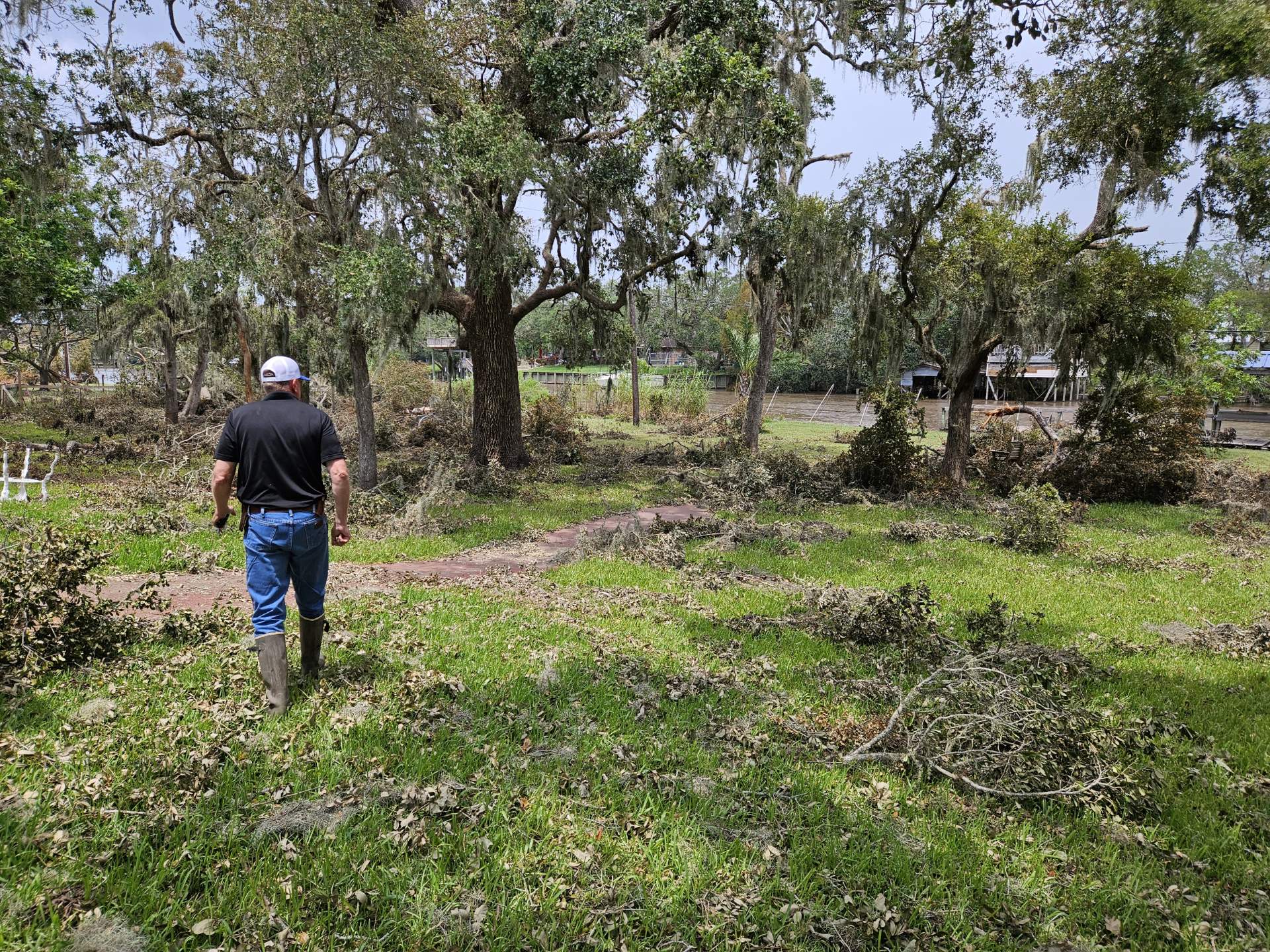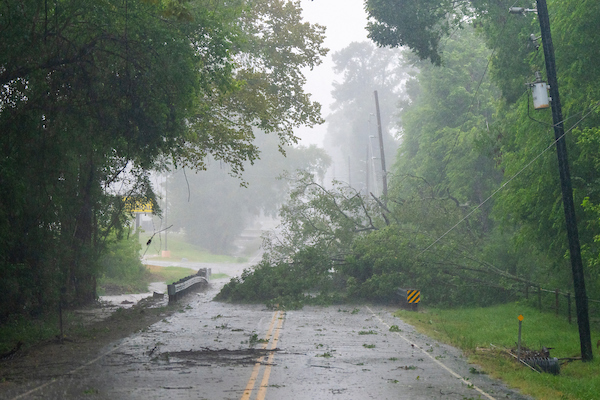Water wells should be tested after a flood
AgriLife Extension expert: Assume flooded well water is contaminated until tested
The Texas Well Owner Network, or TWON, is reminding Texas residents in flood-prone areas that if their water wells become flooded, they should have their well water tested.

With hurricanes likely to hit parts of the Texas and Louisiana coasts, it is likely some rural residents will have their water wells submerged in the resulting floodwaters.
Diane Boellstorff, Ph.D., Texas A&M AgriLife Extension Service water resource specialist, College Station, said private water well owners whose wells have been affected by flooding should assume their well water is contaminated until screened.
The agency suggests, if possible, to take the following actions prior to a storm:
- If the water well system is in an open area, cover and secure exposed parts of the well system to help protect them from flying debris or high waters.
- Fill up the pressure tank as much as possible.
- Turn off the electricity to the well.
- If you have an aerobic septic system, turn off the electricity for the system.
No special preparations are recommended for conventional septic systems.
“You should not use water from a flooded well for drinking, cooking, making ice or brushing your teeth until you are satisfied it is not contaminated,” Boellstorff said.
Boellstorff, who is in Texas A&M University’s Department of Soil and Crop Sciences, said floodwater may contain substances from upstream, such as manure, sewage from flooded septic systems, wastewater treatment plants or other contaminants.
A septic system near a well also can cause contamination when the soil is flooded, so well owners should send their water to a laboratory for testing. The Texas Commission on Environmental Quality provides a list of certified laboratories that analyze drinking water samples.
Joel Pigg, AgriLife Extension program specialist and TWON coordinator, College Station, said research shows the presence of E. coli bacteria in water indicates that waste from humans or warm-blooded animals may have contaminated the water. Water contaminated with E. coli is more likely to have pathogens present that can cause diarrhea, cramps, nausea or other symptoms.

Pigg said those with private wells possibly contaminated by floodwater should use only bottled, boiled or treated water until water has been tested and found safe.
“To make water safe for drinking, cooking and washing, bring it to a rolling boil for at least one minute and then allow it to cool,” he said.
Pigg said if boiling isn’t possible, the water can be disinfected with regular, unscented household bleach. Further details are described in the free AgriLife Extension publication “Disinfecting Water after a Disaster.”
Boellstorff noted a well may need to be decontaminated to make the water safe to drink again and said the agency publication “How to Disinfect a Water Well through Shock Chlorination” would be useful for well owners.
Another publication on the TWON website, “How to Ready Your Well for the Next Flood: Preparation, Evacuation and Return Home” provides additional instructions for decontaminating a well.
“After a flood, wells should be inspected for physical damage and signs of leakage,” Pigg said. “If it appears damaged, consult a licensed water well contractor to determine whether repairs are needed.”
He also noted flooding can damage the well pump and electrical systems.
“If the pump and/or electrical system has been underwater and it is not designed to be under water, do not turn the pump on as there is a potential for electrical shock or damage to your well or pump,” he said.
Pigg said once floodwaters have receded and pump and electrical systems have dried, have a qualified electrician, well driller or pump installer check the wiring system and other well components.
Funding for the Texas Well Owner Network is through a Clean Water Act nonpoint source grant provided by the Texas State Soil and Water Conservation Board and the U.S. Environmental Protection Agency. The project is managed by Texas Water Resources Institute, part of Texas A&M AgriLife Research, AgriLife Extension and the College of Agriculture and Life Sciences at Texas A&M.





